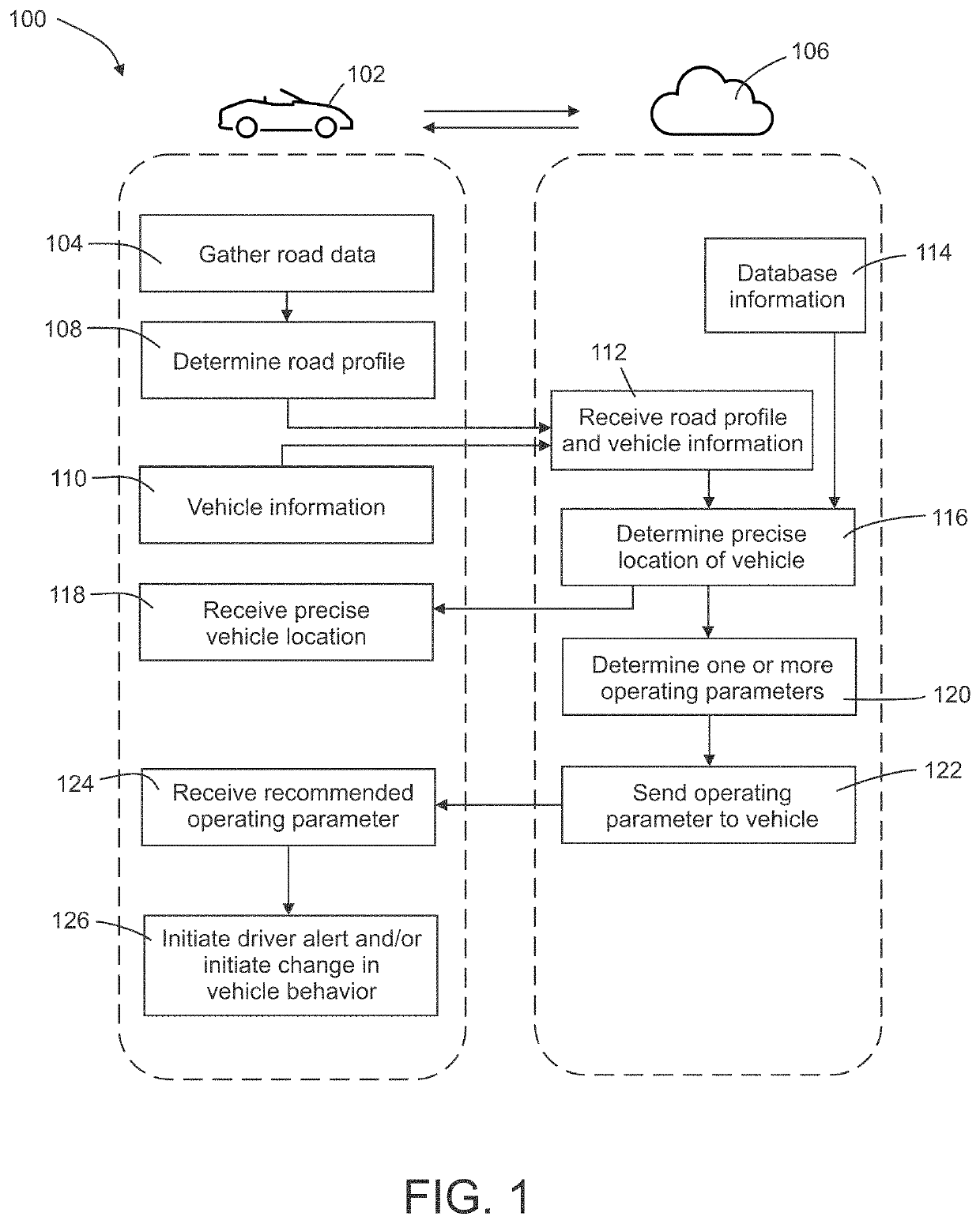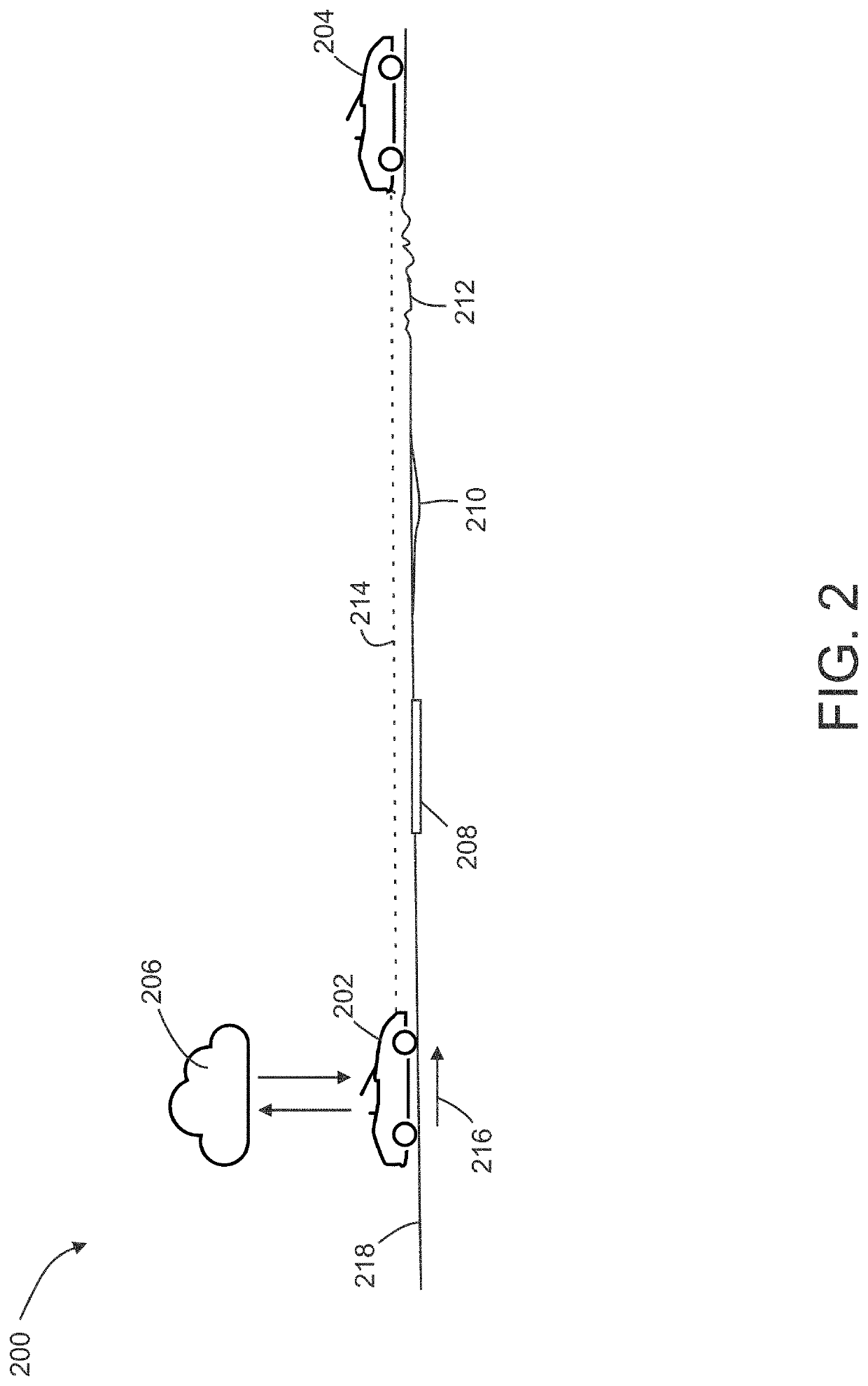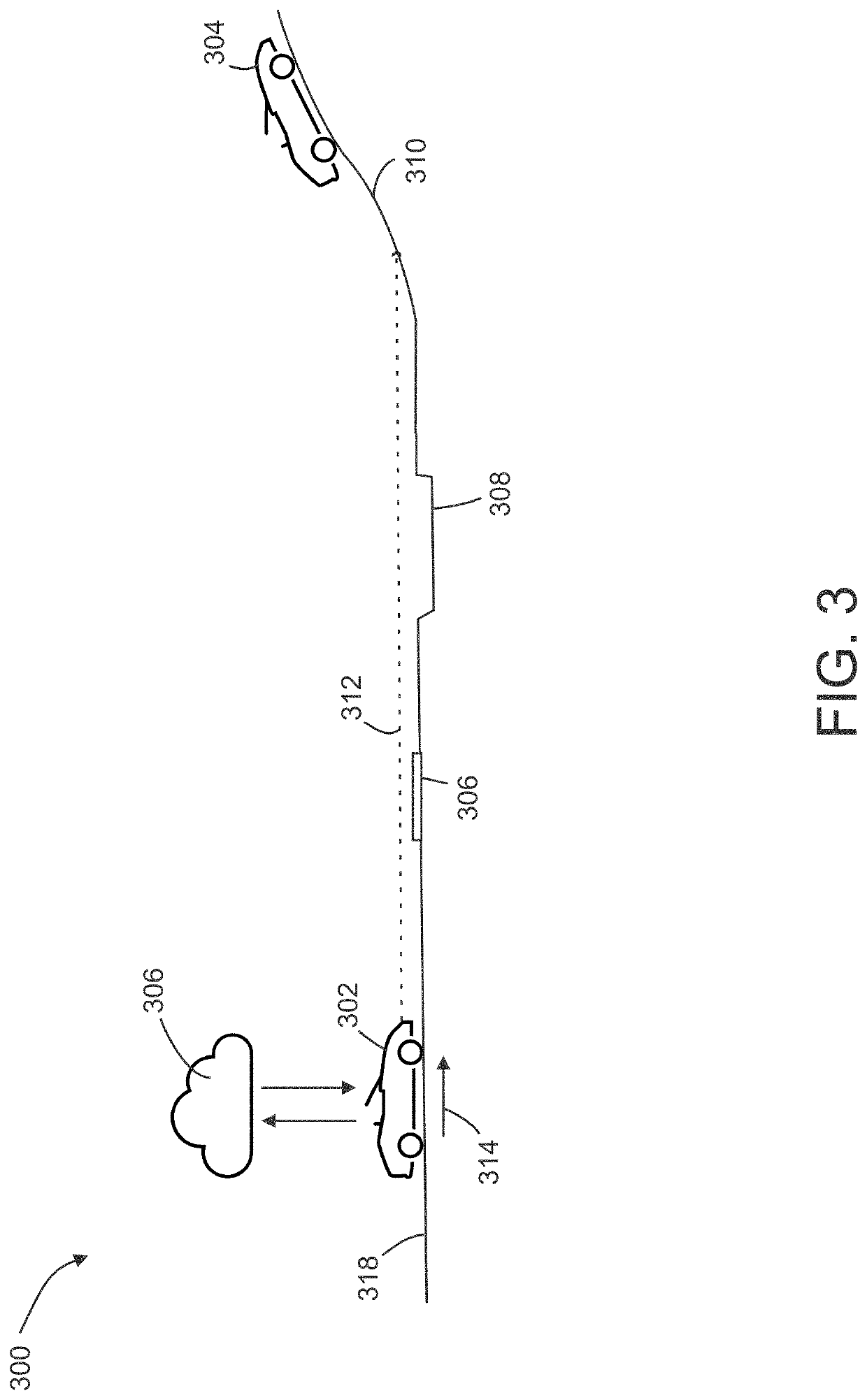Systems and methods for vehicle control using terrain-based localization
a technology of system and terrain, applied in the field of system for terrain-based localization and insights, can solve the problems of insufficient accuracy or resolution of such features, poor visibility, and inability to provide such features with sufficient accuracy or resolution,
- Summary
- Abstract
- Description
- Claims
- Application Information
AI Technical Summary
Benefits of technology
Problems solved by technology
Method used
Image
Examples
Embodiment Construction
[0269]A vehicle traveling along a road, autonomously or under the control of a driver, may interact with one or more road surface features that may expose the vehicle and / or one or more vehicle occupants to certain forces or accelerations. Such road features may affect the comfort of vehicle occupants as well as wear-and-tear of the vehicle. The magnitude, direction, and / or frequency content of such forces or accelerations may be a function of the characteristics of one or more road surface features. A typical road may include various types of road surface features, such as for example, road surface anomalies including, but not limited to potholes, bumps, surface cracks, expansion joints, frost heaves, rough patches, rumble strips, storm grates, etc.; and / or road surface properties, including but not limited to road surface texture, road surface composition, surface camber, surface slope, etc. Road surface properties may affect road surface parameters, such for example, the friction...
PUM
 Login to View More
Login to View More Abstract
Description
Claims
Application Information
 Login to View More
Login to View More - R&D
- Intellectual Property
- Life Sciences
- Materials
- Tech Scout
- Unparalleled Data Quality
- Higher Quality Content
- 60% Fewer Hallucinations
Browse by: Latest US Patents, China's latest patents, Technical Efficacy Thesaurus, Application Domain, Technology Topic, Popular Technical Reports.
© 2025 PatSnap. All rights reserved.Legal|Privacy policy|Modern Slavery Act Transparency Statement|Sitemap|About US| Contact US: help@patsnap.com



